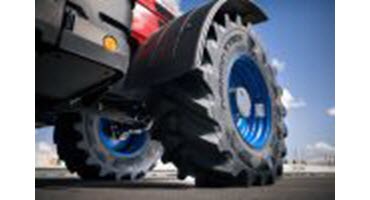2025 Construction Executive Outlook: Brady Seavert, Bobcat VP Construction Sales
Seavert shares trends shaping Bobcat's strategy in 2025, its investments in manufacturing and dealers, and its greatest opportunities...

Editor’s Note: This is one of four Q&As with top executives from construction equipment manufacturing companies. Stay tuned for new perspectives next week.
OEMs saw mixed growth in 2024 as the economy continues to recover from a period of stubborn inflation, high interest rates and global conflicts.
But ask some of the top construction equipment executives about their forecast for 2025 and the outlook gets a little rosier.
For this series of Q&As, Equipment World tapped a handful of construction industry leaders to find out what trends are shaping their strategy in 2025, how they plan to invest in their manufacturing and dealer operations and where the greatest opportunities and roadblocks lie.
Our slate of experts also touched on technology – from telematics to AI – and the next steps in their alternative power transformation.
Keep reading to see where our first expert, Brady Seveart, VP of construction sales at https://www.equipmentworld.com/construction-equipment/compact-equipment/compact-excavators/video/15710381/video-a-closer-look-at-bobcats-e40-mini-excavator, is placing his bets in 2025:
Equipment World: What trends are shaping your strategy in 2025?
There are several factors influencing our 2025 strategy. Two noteworthy trends include the increase in first-time buyers and continued labor shortage challenges.
Connecting first-time buyers to our brand while demonstrating the value of our extensive lineup of worksite solutions will be key. This consumer group will need a different level of support throughout the purchase process and will benefit from more comprehensive buying resources. To effectively serve first-time buyers, we must meet them where they are, educating them about our equipment, attachments and implements. From there, we can empower them to make informed decisions regarding their unique jobsite requirements.
We understand labor shortages continue to impact businesses and contractors. We’re committed to providing compact equipment solutions to help those customers maximize productivity and efficiency. Compact equipment has long been a reliable worksite solution, offering power and versatility when needed most. With more advanced technology offerings and features like autonomous controls, one operator can complete a task that used to require two.
EW: What do you see as the biggest construction market opportunity in 2025?
Our customers aim to accomplish more, requiring compact equipment that meets their demands. Features like electric over hydraulic controls, advanced displays, and improved sensing and cameras deliver an enhanced operator experience while improving jobsite awareness and environmental impact. Continuing to innovate and develop these technologies will ensure operator needs are met while prioritizing jobsite demands.
EW: What will be the greatest challenge?
Today’s buyers are putting in the time when it comes to research. They are evaluating multiple brands and considering multiple angles when it comes to their application and jobsite needs, and that’s a good thing. We know our extensive dealer network and the service and support they provide is a competitive advantage for why customers choose Bobcat. We will continue to focus on supporting our dealers so they can provide excellent assistance and expertise to new and long-time customers.
EW: What issues are your dealers facing and how will you help them address those problems in 2025?
Challenges at the dealership level are always evolving, so proactive and consistent communication with our dealer network is crucial. As for 2025, we’re looking to support dealer growth in urban areas that are growing rapidly. Driving growth in opportunistic markets for landscaping and construction equipment will continue to be a priority.
EW: Will you make investments in your manufacturing and distribution networks next year? If so, what will they be?
Prioritizing investments in manufacturing and distribution networks is more important than ever. Our teams are always looking for ways to streamline our processes, better serving our customers by operating more efficiently and effectively. Integrating new warehouse technologies and integrating continuous product quality processes are just a few ways we are optimizing efficiencies in our factories and with procurement and supply chain management.
As we’ve previously shared, we are building a new manufacturing facility near Monterrey, Mexico. With construction continuing in 2025, we expect this to be operational in 2026.
EW: What technology do you see as having the most potential in the near term?
Operators want to accomplish more on the jobsite with the power and performance needed for improved productivity and uptime. At Bobcat, we are always asking, “How can we use technology to not just meet those demands but exceed expectations?” Given this, we look to sensing systems and cameras for object detection and jobsite awareness, advanced displays that enable adaptable performance features, and improved controllability with electric over hydraulic controls. We also have a focus on advancing technology to create more efficient powertrain and hydraulic systems to further boost operator productivity and efficiency.
EW: What's the next step in your alternative-power plans? What kind of demand are you hearing from end users on electric, hydrogen or other alternatively fueled equipment?
We are proud of our commitment to sustainability and commercially advancing alternative-power machines. More and more, operators are working on urban job sites with constraints around noise, emissions and more. We continue to do what we’ve always done – listen to customer feedback to better understand their jobsite challenges and reinvent how work gets done with a focus on sustainability, innovation and delivering industry-leading performance. Specifically, we anticipate customer growth in geographic markets where federal and local incentives currently exist around alternative power, as well as consumers who desire electric and other alternative-fuel machine technology.

 machineryasia
machineryasia 






